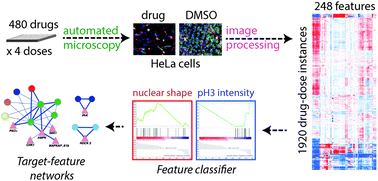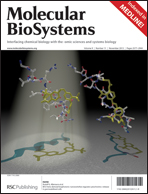Cytological profiling (CP) is an unbiased image-based screening technique that uses automated microscopy and image analysis to profile compounds based on numerous quantifiable phenotypic features. We used CP to evaluate a library of nearly 500 compounds with documented mechanisms of action (MOAs) spanning a wide range of biological pathways. We developed informatics techniques for generating dosage-independent phenotypic “fingerprints” for each compound, and for quantifying the likelihood that a compound's CP fingerprint corresponds to its annotated MOA. We identified groups of features that distinguish classes with closely related phenotypes, such as microtubule poisons vs. HSP90 inhibitors, and DNA synthesis vs. proteasome inhibitors. We tested several cases in which cytological profiles indicated novel mechanisms, including a tyrphostin kinase inhibitor involved in mitochondrial uncoupling, novel microtubule poisons, and a nominal PPAR-gamma ligand that acts as a proteasome inhibitor, using independent biochemical assays to confirm the MOAs predicted by the CP signatures. We also applied maximal-information statistics to identify correlations between cytological features and kinase inhibitory activities by combining the CP fingerprints of 24 kinase inhibitors with published data on their specificities against a diverse panel of kinases. The resulting analysis suggests a strategy for probing the biological functions of specific kinases by compiling cytological data from inhibitors of varying specificities.

You have access to this article
 Please wait while we load your content...
Something went wrong. Try again?
Please wait while we load your content...
Something went wrong. Try again?


 Please wait while we load your content...
Please wait while we load your content...